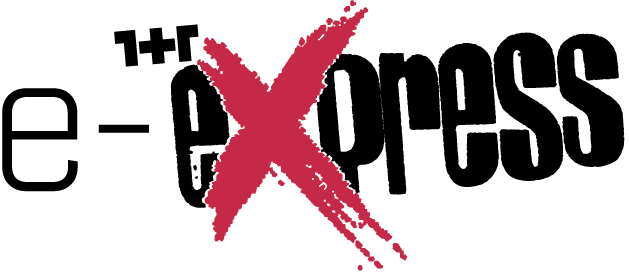What does the current data say about the structural crisis conjuncture in Turkey and what are we facing with? Here is Ümit Akçay’s latest take on the possible political and economic developments in 2020.

If 2013 was a crucial turning point for Turkey’s Justice and Development Part (AKP) rule, 2020 is already a candidate to be one of the most tense years of its tenure. The historical moments when the economic crisis and the political/state crisis feed one another can be defined as structural crisis conjunctures. According to this definition, Turkey has been in a structural crisis conjuncture since 2013. In this article, I will first draw attention to the intensified economic and political tensions in early 2020, and secondly I will discuss the possible ramifications of increasing tensions in four points.
Structural crisis conjuncture
Many evaluations on the 2018-2019 crisis, which are mostly focusing on the contingent factors, give superficial answers to the question of why this crisis took place. For instance, the Erdogan government claimed that the crisis hit Turkey because of foreign attacks on Turkish economy. However, as I argued before, the 2018-2019 crisis was the third phase of the structural crisis conjuncture after 2013. Put differently, one should be able to distinguish the structural dynamics that caused the crisis and contingent developments that are triggering it. Therefore, in order to have a more comprehensive understanding of a particular phenomenon, the analysis should be a multilayered one, which includes structural dynamics, conjunctural factors and contingent developments.
The fact that the Erdogan administration was able to avoid implementation of an IMF program in 2019, and was able to limit the severity of the economic contraction are related to the shift in the global financial cycle from contraction to expansion phase in 2019.
The post-2013 period created a particular conjuncture, in which economic bottlenecks have accompanied the state crisis. In the diagram below, I’ve summarized the key political and economic developments and the interplay between them. The key point here is to place the main contingent political and economic developments into the context of the structural crisis conjuncture. Such an effort has made the diagram a little bit crowded, but let me summarize what this particular conjunctural analysis tells us.
Diagram-1: Structural crisis of Turkey

First, as the blue arrows at the top of the chart indicate, the global financial cycle was in the contraction phase between 2013 and 2018, while the global financial contraction turned into the expansion phase in 2019. This is an important factor, not only because the downturn trends in Turkey’s accumulation regime have intensified during this period of global financial contraction, but also because the state crisis has resulted in political instabilities in the same period.
Similarly, the fact that the Erdogan administration was able to avoid implementation of an IMF program in 2019, and was able to limit the severity of the economic contraction are related to the shift in the global financial cycle from contraction to expansion phase in 2019. This was also the development that opened the door to the authoritarian consolidation attempt of the current administration.
Secondly, while the political developments that I’ve listed in the diagram (from 1 to 4) show the continuity of the state crisis, the circles that I’ve pointed out with arrows show the interplay between the state crisis and Turkey’s economic performance. That is to say, there is a two-way causality between economic and political crises, i.e. the tensions in the power bloc deepened economic stress and vice versa.
In order to close the gap between foreign exchange and interest rates in the upcoming period, either the value of the Turkish Lira against the US Dollar should fall below 4 TL or the possibility of an increase in interest rates will come up again
Thirdly, regarding the developments in foreign exchange, interest and inflation, one makes the following observation: After 2013, each period in which interest rates were suppressed and lagged behind inflation (circles 1, 2 and 3), faced a foreign exchange attack, although it was triggered by different political instability dynamics.
This is a typical dilemma of policy makers in the global South. This dilemma is a product of structural contradictions that are rooted in the forms of articulation of Turkish economy to the world capitalist system. However, it is the preferences of the AKP governments, who followed the accumulation model that was designed by the IMF after the 2001 crisis, that is allowing these contradictions to manifest themselves the way we are currently experiencing.
Approaching a sharp bend
The transition of the global financial cycle to the expansion phase in 2019 helped Turkey’s policymakers to cut interest rates sharply (black line on the chart, especially area number 4). Although this interest rate decline went hand in hand with the declining trend of inflation until October 2019, the former continued to decline despite the fact that the latter started to move up due to the base effect. The insistence on lower interest was an imperative for the Erdogan administration to stimulate economic growth as soon as possible in order to increase its electoral support, which already melted in the structural crisis conjuncture.
In the current situation (circle 4), decoupling between foreign exchange and interest rates continues (blue and black lines) and this accumulates tremendous risks in the financial system. I have listed some of the likely developments for the near future:
- We have come to the end of interest rate cuts, from now on there will be no 3-5 point interest rate cuts. In other words, monetary policy has reached its limits.
- In order to close the gap between foreign exchange and interest rates in the upcoming period, either the value of Turkish Lira against US Dollar should fall below 4 TL or the possibility of an increase in interest rates will come up again. However, if neither of these will happen, 2020 must be either a year of very strong capital inflows or capital movements will completely be restricted.
- Although the global financial expansion conjuncture allows moderate depreciation of TL while the interest rate cuts were continuing, policymakers will have to make a choice between the two in the near future. This is because the enormous increase in consumer loans, especially as a result of the debt-based economic stimulation strategy preferred by the Erdogan administration for exiting the crisis, may create an upward pressure on inflation.
- The authoritarian consolidation option has become an imperative for the ruling bloc, but this imperative is acting on a very fragile economic base. In other words, the Erdogan government is skating on thin ice now. It is hardly possible to predict whether the cracks on the ice will expand or break as a result of a new tension in the ruling bloc or a new foreign policy crisis that may arise as a result of the foreign policy activism. However, at the beginning of 2020, it is possible to say that the Erdogan administration is approaching a sharp bend.
Let me finish with a final note. Pointing to these possibilities neither mean to support the apolitical argument that “a new economic crisis will force the government down” nor an attempt to draw a dark picture for Turkish economy. I am humbly attempting to summarize the picture I see when I evaluate the latest economic data from the perspective of the current structural crisis conjuncture.





